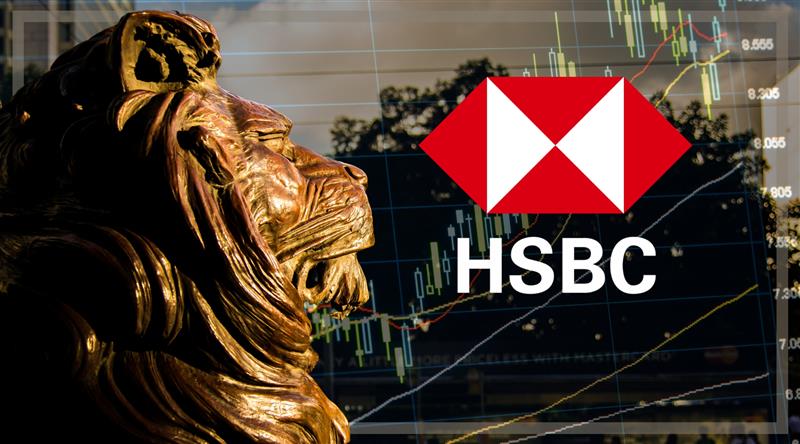The Bitcoin halving event in 2024 was one of the most anticipated events in the crypto world. Every four years, Bitcoin goes through this halving process, cutting the reward miners receive for verifying transactions by 50%. What makes this event significant isn’t just the reduction in Bitcoin supply — it’s the ripple effect it creates across the market. For institutional investors, particularly hedge funds and crypto ETFs, this halving raises a critical question: will it boost Bitcoin’s price as it has in the past, or are we in for something different this time around?
Bitcoin halving happens roughly every four years or after every 210,000 blocks are mined. When the network launched in 2009, miners earned 50 Bitcoin per block. Over the years, as halvings occurred in 2012, 2016, and 2020, those rewards were halved each time. The most recent halving in 2024 reduced the reward to 3.125 Bitcoin per block.
#Bitcoin (BTC), the world’s most popular #crypto, is about to experience a major event called a “halving.” This pre-programmed system within Bitcoin cuts the rewards for finding new blocks of Bitcoin transactions in half.https://t.co/ki7bM8t9iO
— #DisruptionBanking (@DisruptionBank) April 24, 2024
The idea is pretty straightforward: reducing the number of new Bitcoin entering circulation makes the asset scarcer. This scarcity has historically led to price surges. After the first halving in November 2012, Bitcoin’s price increased from around $12.20 to nearly $1,000 by the end of 2013. The 2020 halving in May saw Bitcoin rise from around $9,000 to an all-time high of $69,000 by November 2021. With these figures in mind, it’s no wonder institutional players are paying attention.
Institutional Interest In Bitcoin
In recent years, institutional investors have increasingly turned to Bitcoin as a hedge against inflation and a new asset class. According to the Fidelity Digital Assets 2023 Institutional Investor Digital Assets Study, 65% of institutional investors plan to buy or invest in digital assets in the future, with Bitcoin and Ether being prominent assets. Hedge funds like Pantera Capital and crypto-focused ETFs like those from Grayscale have capitalized on Bitcoin’s potential for high returns.
Cathie Wood, CEO of Ark Invest, reiterated the significance of Bitcoin during an interview on Bloomberg, stating, “Bitcoin is a hedge against both inflation and deflation because there’s no counterparty risk. It’s digital gold.” This perspective is widely shared among institutional investors who view Bitcoin not just as a short-term trade but as a long-term bet.
💥BREAKING💥
— Quinten | 048.eth (@QuintenFrancois) May 16, 2024
937 financial institutions bought #Bitcoin through the ETFs during Q1 2024
That’s 10 times more institutional adoption than Gold
But “there is no institutional demand for $BTC “ pic.twitter.com/C7tiSCa8pY
Another report by PwC published in October 2024 revealed that nearly 50% of traditional hedge funds are actively involved in crypto or exploring the market, and digital assets, including Bitcoin, are among their top picks. This increased participation reflects a fundamental shift in how Bitcoin is perceived — not just as a speculative investment but as a legitimate store of value.
As we rolled into the 2024 halving, institutional players were cautiously optimistic. A report by CoinShares noted significant inflows into Bitcoin-focused ETFs, with a notable single-week inflow of $326 million, signaling strong confidence in Bitcoin’s future, particularly with the anticipation of ETF approvals. The scarcity narrative clearly resonates with big-money players.
However, unlike previous halvings, some institutional investors are taking a more measured approach this time. Paul Tudor Jones, the billionaire hedge fund manager who made headlines in 2020 for investing in Bitcoin, recently said, “Crypto’s going to have a crazy rocket ship ride, going up and down along the way. But my guess is Bitcoin, in particular, will be substantially higher in 20 years than where it is right now. And who knows what role it has in the monetary system?”
We saw mixed signals in the weeks following the halving on April 19, 2024. Bitcoin hovered around $28,000 to $32,000, showing a slight uptick but nothing close to the explosive growth seen after the 2020 halving, when the price surged from around $8,700 in May 2020 to approximately $60,000 by March 2021. This has led to speculation that the halving effect might already have been priced in.
According to data from Glassnode, the number of whale addresses holding more than 1,000 BTC has been declining, with a notable decrease of 23% from the 2021 bull market to 2023, indicating some whales were either distributing holdings or pausing accumulation. However, by mid-2024, the number of these addresses stabilized at around 1,600 entities following a surge related to Bitcoin ETF inflows earlier in the year. This suggests that rather than a sharp decline, there was a consolidation phase after the halving, and whale behavior became more cautious, suggesting that some large investors were cashing out profits or taking a wait-and-see approach.
Institutional hunger for Bitcoin is on the rise, as U.S. spot ETFs manage a whopping $58 billion, seizing about 4.6% of Bitcoin’s circulating supply.
— Kyledoops (@kyledoops) October 10, 2024
Powerhouses like BlackRock, Fidelity, and Grayscale are leading the charge, scooping up Bitcoin in the $54,900 to $59,100 range.… pic.twitter.com/S8rWqUTvqw
Price Projections: Boom or Bust?
Historically, Bitcoin halvings have been followed by substantial price increases. For instance, after the 2012 halving, Bitcoin rose from around $12 to over $1,100, and after the 2020 halving, it soared from $8,700 to over $60,000. However, for the 2024 halving, the outcome is uncertain, and analysts are divided.
While some believe Bitcoin could follow its historical trajectory and potentially reach between $135,000 and $250,000 by 2025, fueled by institutional buying and increasing scarcity, others remain cautious due to macroeconomic and regulatory challenges.
Analysts from AllianceBernstein, Bloomberg, and The Motley Fool have projected that Bitcoin could reach $80,000 by the end of 2024, assuming the broader macroeconomic landscape remains stable. “The scarcity effect is real, but Bitcoin is also facing headwinds with potential interest rate hikes and inflation concerns,” said one Bloomberg strategist.
JPMorgan released a research report on Wednesday that predicts a much steeper price decline for #Bitcoin.
— Dylan K (@MightyDylanK) April 20, 2024
"we see a downside for the bitcoin price post-halving for several reasons” such as “overbought conditions” observed in the bank’s analysis of Bitcoin futures.
/2 pic.twitter.com/kQFFYaXyiH
On the other hand, JP Morgan’s strategists are a bit more cautious. “If you ask, right now, institutional investors whether $50,000 or $60,000 is looking like an attractive level for Bitcoin, they will most likely say no,” said Nikolaos Panigirtzoglou. “I fear we might need to see Bitcoin moving below $30,000 for that institutional interest to pick up considerably.”
There’s also a growing debate over whether Bitcoin’s historical cycles will repeat in such a mature market. Katie Stockton from Fairlead Strategies noted, “The market is more complex now than it was during previous halvings. There are more institutional players, more regulatory scrutiny, and more mature financial products tied to Bitcoin, like ETFs.”
What’s Next for Institutional Investment?
As we go forward, the big question is whether institutional investment in Bitcoin will keep growing. The data suggests it will. Fidelity’s 2023 report showed that 65% of institutional investors expect to increase their crypto allocations over the next five years, with Bitcoin being their top choice among digital assets. However, regulatory pressures remain a wild card, particularly in the US, where the SEC has been scrutinizing crypto products more heavily.
According to Michael Saylor, CEO of MicroStrategy and one of the largest institutional holders of Bitcoin, “That’s why all of us are fairly bullish over the next 12 months: demand’s going to increase, supply’s going to contract, and this is fairly unprecedented in the history of Wall Street.”
Indeed, Bitcoin’s volatility is one of the main concerns for institutions. Rick Rieder, Chief Investment Officer of Global Fixed Income at BlackRock, said in an interview, “Bitcoin has a place in portfolios, but it’s not for everyone. Institutions often seek predictability, and Bitcoin’s volatility doesn’t always provide that.”
Still, Bitcoin’s deflationary model is an attractive prospect for long-term investors. As fewer Bitcoins are mined and the supply continues to shrink, many believe the price will rise in tandem. Hedge funds and ETFs seem to be preparing for this eventuality, but they’re doing so cautiously.
Factoring in accumulation from long-term holders, Bitcoin has been net "deflationary" for the majority of the last two years.
— Will (@WClementeIII) November 7, 2023
After the upcoming halving in 5 months, this will become increasingly the case — albeit until higher prices eventually incentivize new sellers. pic.twitter.com/rg0QOsihwD
According to the 2023 PwC Global Crypto Hedge Fund Report, 29% of traditional hedge funds currently invest in crypto-assets, a decline from 37% the previous year. However, there is a notable interest in increasing crypto exposure, with 67% of hedge funds that already hold crypto planning to either maintain or increase their exposure. The report also highlights that regulatory clarity is crucial to decision-making for many hedge funds. Around 54% of traditional funds, which currently do not invest in crypto, stated they might reconsider if regulatory uncertainties are resolved.
The 2024 Bitcoin halving has certainly influenced institutional investment, but the full impact is still unfolding. While some investors are banking on Bitcoin’s reduced supply to drive prices higher, others are adopting a more cautious approach, wary of the market’s notorious volatility. The months ahead will tell whether Bitcoin follows its historical pattern of post-halving price surges or breaks from tradition in this more mature market.
In any case, institutional investors will continue to shape Bitcoin’s future. Michael Saylor aptly opines, “As Bitcoin approaches its next halving and enters a new four-year cycle, my unwavering commitment and long-term vision continue to shape the narrative around institutional Bitcoin adoption. The halving is a key moment, but it’s just part of the bigger picture.”
The next few years will be crucial in determining whether Bitcoin’s deflationary model can continue to attract institutional players and whether those players can stomach the volatility that comes with it.
Author: Ayanfe Fakunle
The editorial team at #DisruptionBanking has taken all precautions to ensure that no persons or organisations have been adversely affected or offered any sort of financial advice in this article. This article is most definitely not financial advice.














